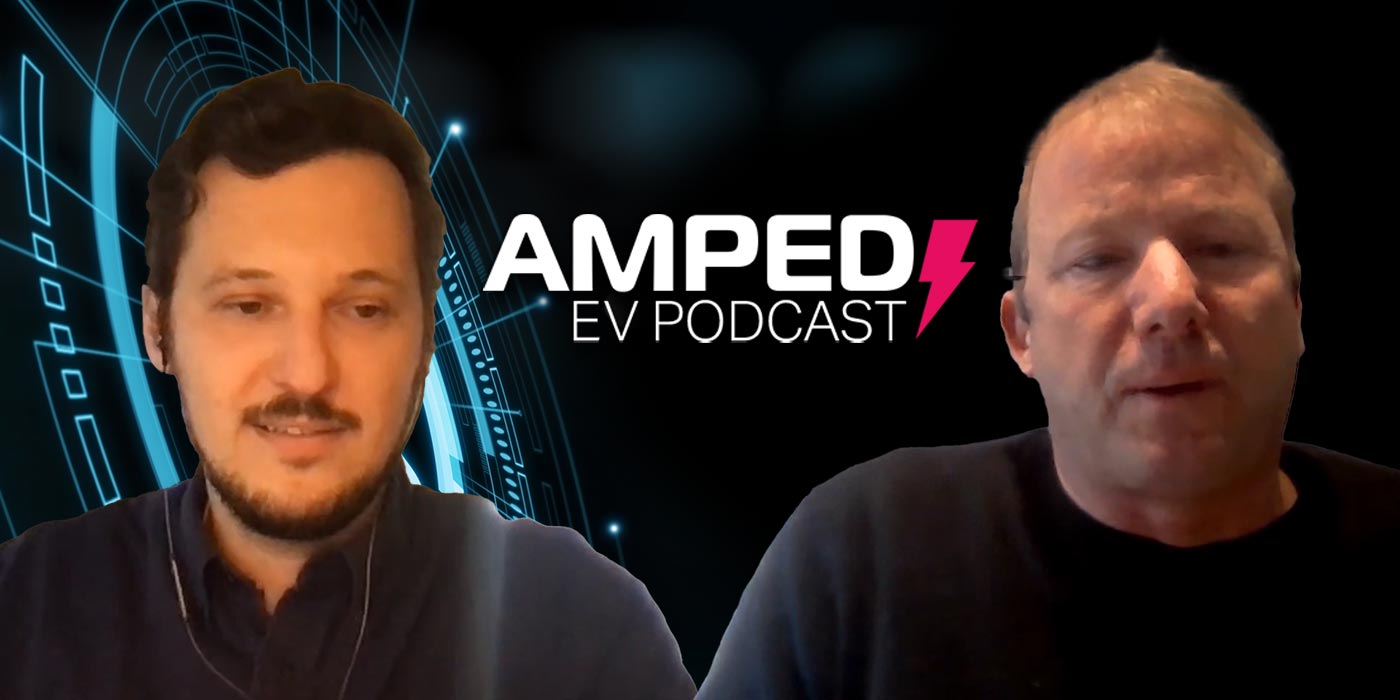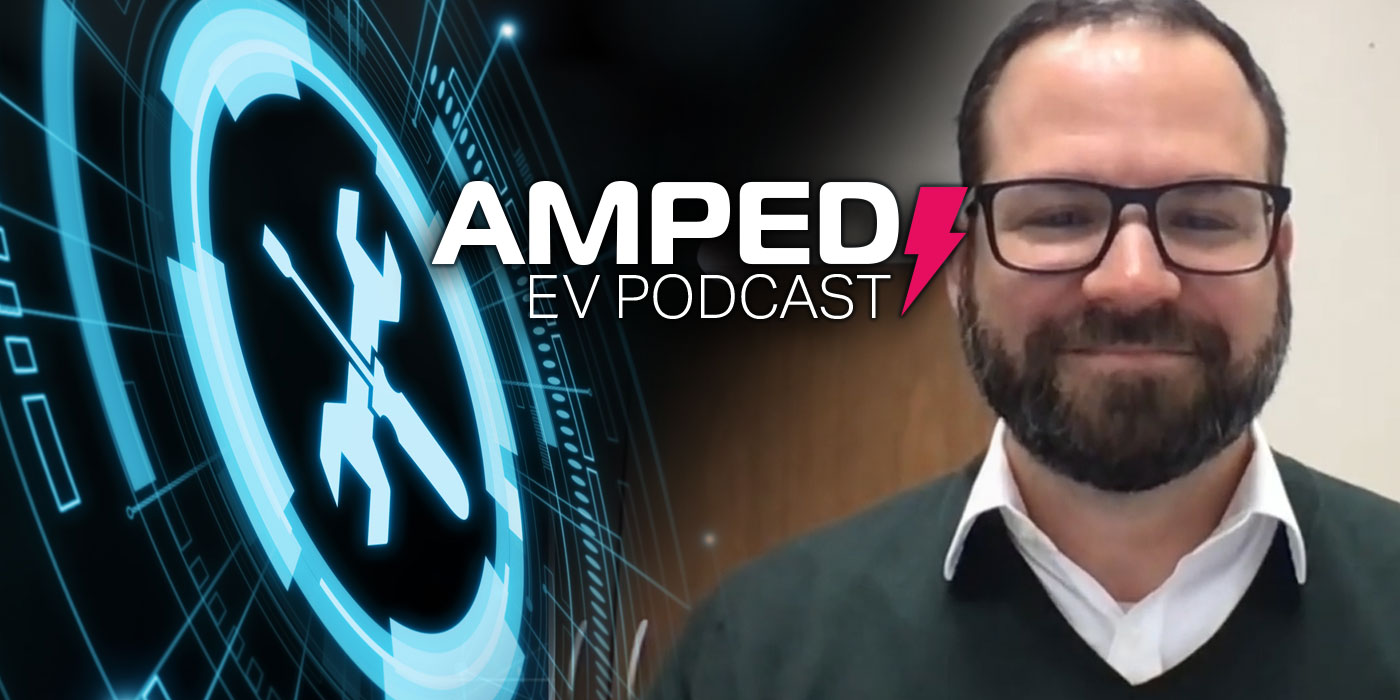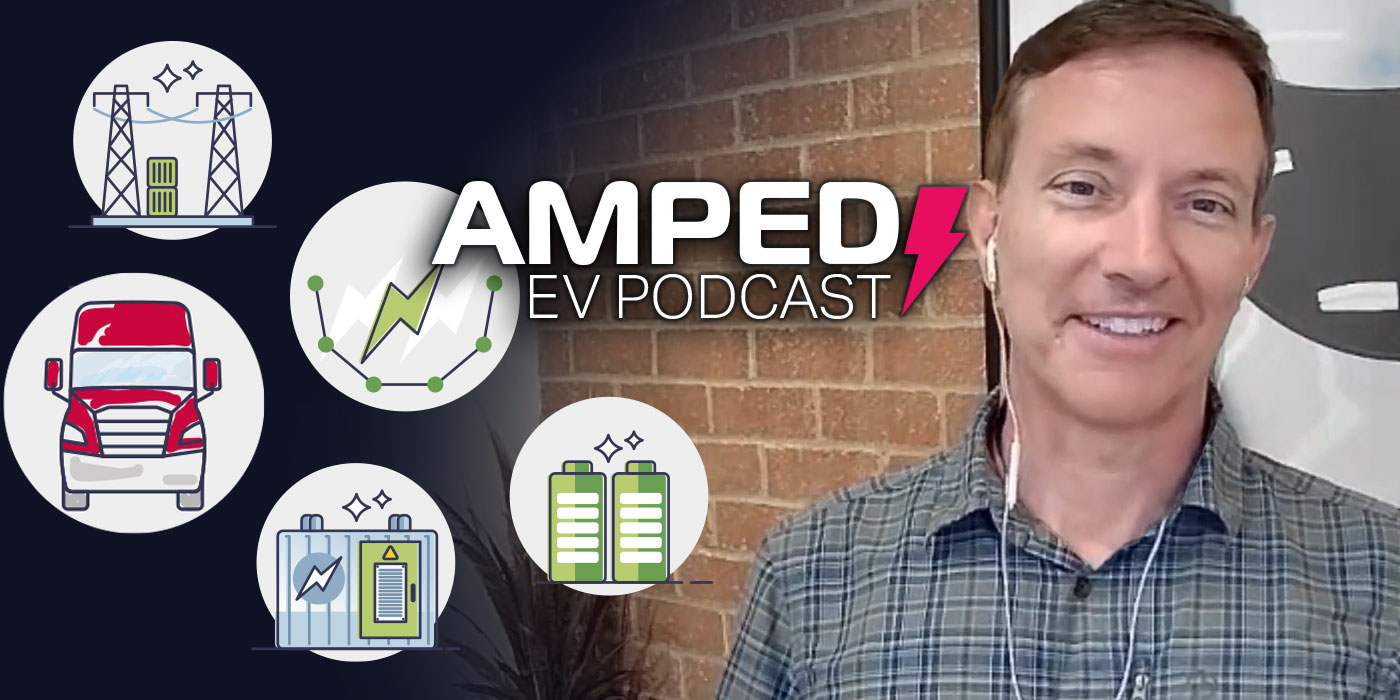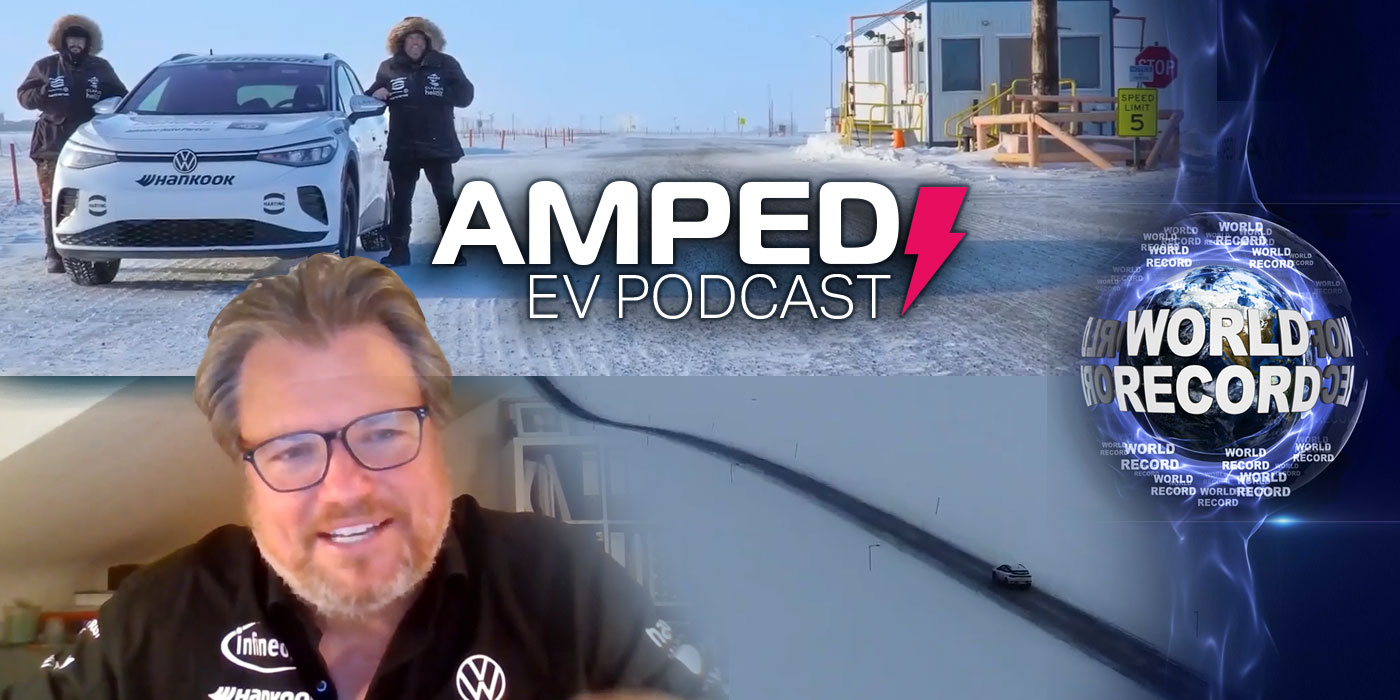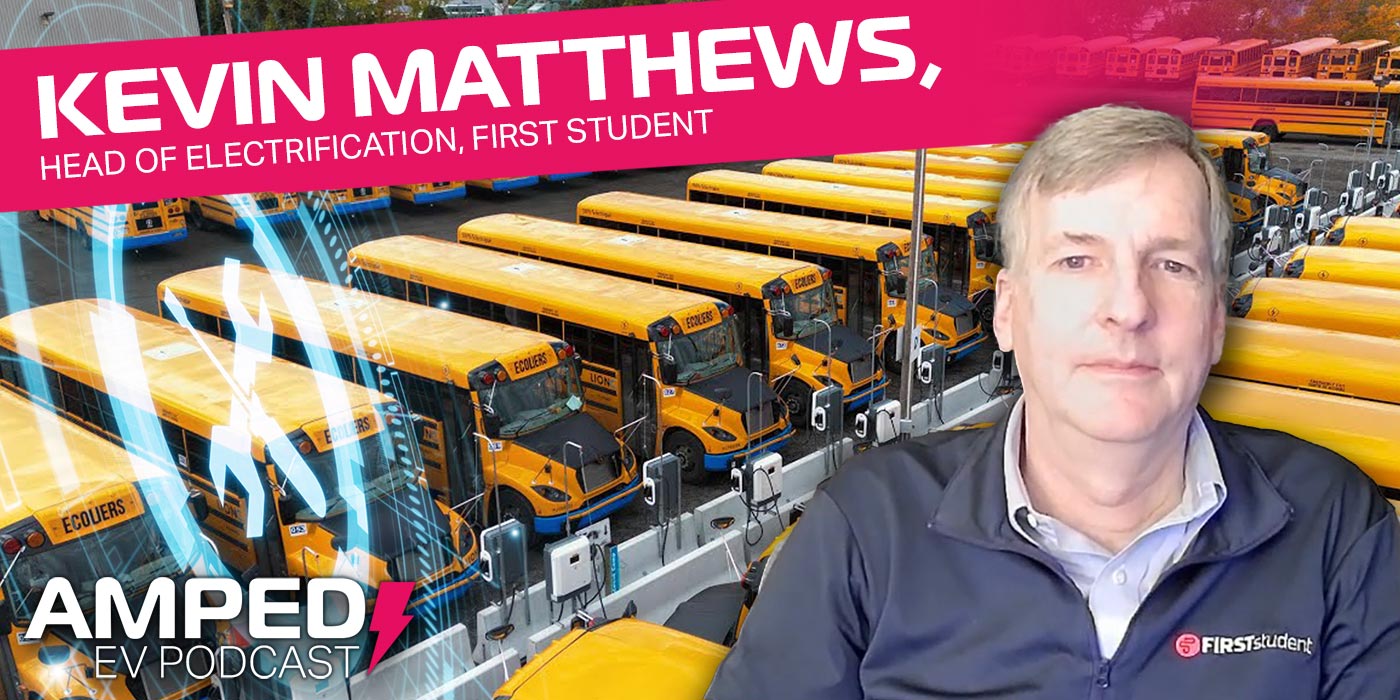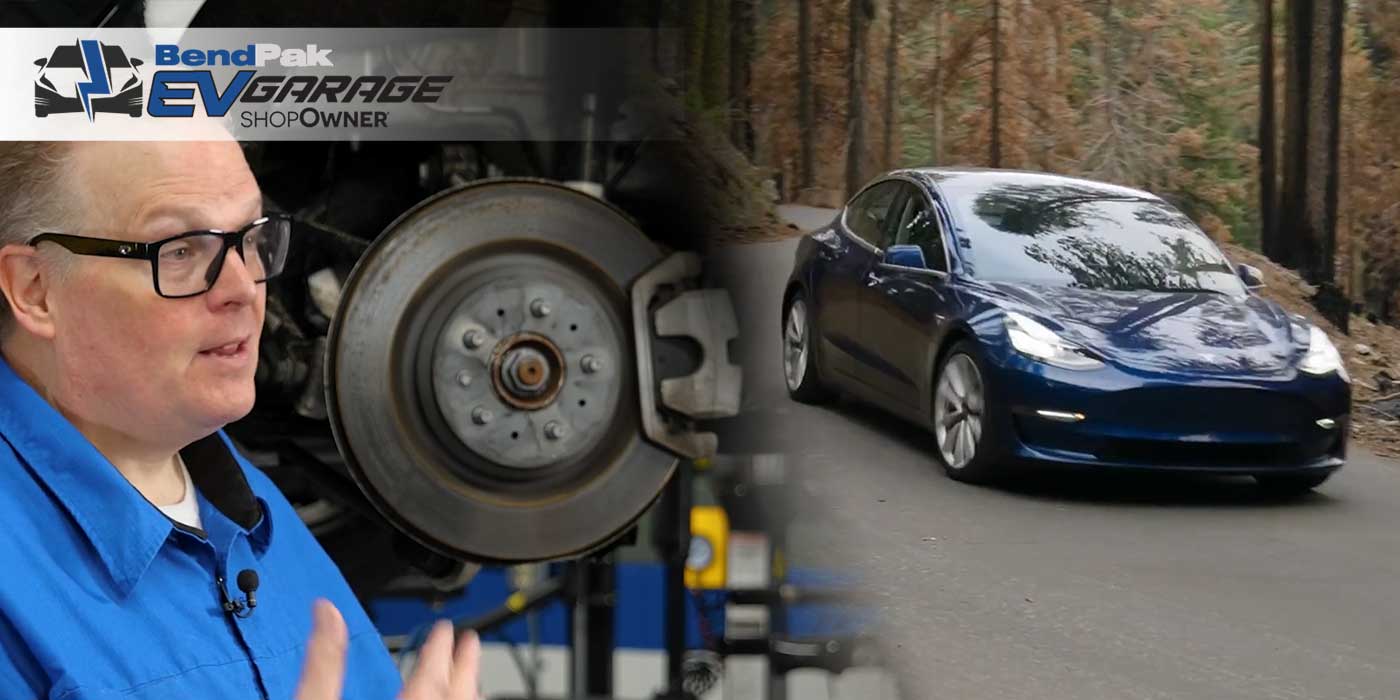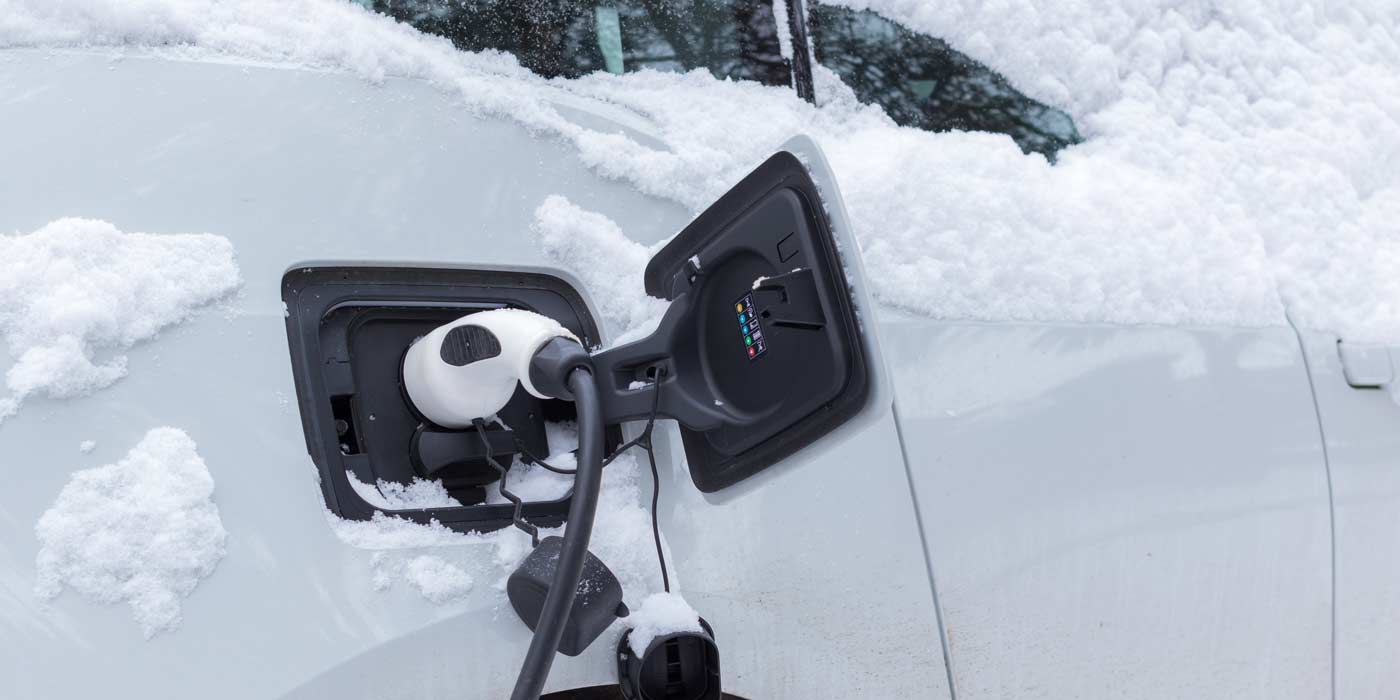Autonomous vehicles tend to be electrified using powerful batteries because they are covered in sensors and require the latest computer hardware to interpret the onboard data in near-real time. This draws a ton of electric power, and an all-electric battery pack can not only provide this power, but keep the stream much more steady and stable when compared to an ICE engine.
These sensors work together to provide a comprehensive view of the vehicle’s surroundings, enabling it to detect and respond to various objects, obstacles, road conditions, and traffic situations. But, what if you eliminated the lanes these vehicles use to navigate completely?
Low-speed autonomous vehicles are expected to navigate areas without lanes with short stopping distances. This makes them suitable for various environments like resorts, hospitals, university campuses, industrial campuses, retirement villages, gated communities, airports and more.
On this episode of The Amped EV Podcast, we speak with Avinoam Barak, the CEO of Carteav, a company that develops autonomous low-speed electric vehicles. During our conversation, he dives into the technology Carteav uses – like sensor fusion, which combines lidar, radar, and cameras to enhance the vehicle’s perception and safety. We also discuss the navigational accuracy of these vehicles, as well how to address the infrastructure challenges that come with managing these vehicles.
Want more of The Amped EV Podcast? Click here.
Here’s a transcript of the show:
David Sickels: Hello and welcome back to the Amped EV podcast. My name is David. I am the editor for The Buzz and today we are talking about autonomous low-speed vehicles. These are really cool because think of them as people movers in a crowded space. They don’t need a lane necessarily. They can kind of move wherever they need to go and they’re always looking at what’s ahead of them. So to talk with us today, we are talking Avinoam Barak. He is the CEO of Carteav. Let’s get to the interview.
Okay. Avinoam, thank you so much for joining us today. This is a really, really cool topic. So tell us a little bit about why EVs are such a good match for autonomous vehicles. Why are they such a good marriage together?
Avinoam Barak: Okay, first of all, in an autonomous vehicle you must have many sensors and you need to have a computer inside, a very strong computer, because you need to do a lot of calculations in order to avoid mistakes and so on. Those computers and sensors cannot be shut down when you close the cart. They need to be in a standby mode. For example, if you are waiting and the cart is doing nothing and now you want to order it, you need to wake it up immediately. So it needs to be in a standby mode. So it needs to have a strong battery and strong electrification in order to wake up very fast. Okay. It’s not that I can use the gasoline in order to do it.
The second one, when you charge it and suddenly there is an order, you can plug it out and send it immediately to the mission, which means that you need to cut off in the middle of charging. And it has to be controlled digitally. So it has to have power, which is electrification. This is one.
The second one is that we need, in order to have a service all day round, we need to deal with it with a unique charging. Autonomous carts should be managed autonomously, their charging. There are a few methods we’ll discuss later on of how to charge it, but we are not like a normal non-autonomous, you charge it for 10 hours and you have a battery. For us, we can charge it 20% because we need to give a service.
So there are a lot of things or scenarios that can happen during the day that we need to control it and to cut it in the middle and then continue later on and so on. It has to be monitored digitally, controlled digitally, and autonomously charged digitally.
That’s why we are fully bound and fully working only with electric vehicles and not any other vehicle.
David Sickels: Got it. Got it. Yeah, autonomous charging, that’s a really good point that I hadn’t thought of. Can you tell us a little bit, just a baseline about your company and the technology that you’re using on the electrification and the autonomous side?
Avinoam Barak: Yes. So first of all, we are working and specializing on low-speed areas. Now, when you are talking about low speed, the stopping distance is very short. For example, normal car, autonomous or not autonomous, electric or not electric, when you drive 60 miles per hour, your stopping distance is around 200-300 yards. Almost 1,000 feet, the stopping distance.
When you are driving 10 miles per hour, your stopping distance is around 15 yards, which means that it’s a totally different game, which means that all the sensors need to look for 30, 40 yards rather than a few hundred meters and so on. And the safety out of it, it’s much, much different because you have many pixels and enough resolution for any threat. When you see a person from 300 yards, for example, you have only a few pixels and you have the probability of a mistake, which is quite high. When you see it from 30 yards, you have many more pixel on the person, so your probability is much higher. So this is the concept and the environment we have.
The second one, is if you are not working in a managed environment like a normal road, then you have an autonomous vehicle. But most of the cars, 99.9, are normal cars with drivers. And they are making most of the problems. The drivers are causing the problem. The drivers are creating endless scenarios. So if you have a managed area, the manager of the area can decide who can enter, who can leave and can decide about the rules in the area.
So the technology we are using are perceptions, which means that we are making a fusion of different type of sensors, which is lidar, radar, and camera. We don’t believe in any sensor that can solve it. The only way to bring really a working solution is by having a few uncorrelated sensors. The way that we are doing the control is different, we’ll discuss it later on, is different because we are managing the space and not the lanes. I will explain it later.
And the navigation, compared to normal electrical and not autonomous, should be very, very, very accurate. In normal navigation you are using Google Maps and so on. So you can have 10 meters, 5 meters, 15 meters, I need to have two centimeters of accuracy in order to drive. So we need to solve it. Later on, I will describe how we solve it. And since we are walking in a known area and a managed area, we need to map the area in a very unique way. We need to have really very accurate and unique smart mapping in order to map it, in order to work well.
David Sickels: And what kind of technology are you using to map that area where, to your point, you need to be able to know what is two centimeters in front of that vehicle?
Avinoam Barak: Yes. So first of all, our navigation system is based on two-centimeter accuracy, and the way to reach it is based on four different layers. And in the mapping, we are using the same cart. We don’t use any external devices in order to record the map. And we are mapping it in 2D and 3D. Now if you are asking about yourself, how we are doing the navigation, one, we are doing normal GPS, which is giving 10, 20 meter accuracy.
Second, we are doing a complementary solution by GPS RTK. RTK is a solution that is limited to a 10-mile diameter, 10-mile circle, which is enough. Any area or hotel or anything like that, it’s much, much smaller. And in this case, we are installing one navigation system in a specific non-place, and it can send in the wireless system the corrections of the satellites. Because we have one dynamic system, we have one static system, which we know the mistake in this static system because we really know the relocation, because one, we know the relocation that we get on the satellites and we know what type of mistake we have.
So we send those mistakes, the corrections in the network. And by that, we get the 2-centimeter accuracy. But sometimes we don’t have GPS. So we are adding two more layers when we find out that the GPS signal is not strong enough. One of them is the Automator. We count the number of the circles of the wheel and by that, we know exactly the size of the wheel and we count it. So we know to complete it and to have a very good accuracy. And we have an INS system like we have a phone with a gyro, but we have a very accurate one that we can measure all the acceleration in all axes and do the integral mathematics in order to find it.
So we have four subsystems that just show you that we are not relying on one, four of them, that really brings us to two-centimeter accuracy and loss or loss signals of satellites for a short period of time.
David Sickels: Wow, very cool. Can you tell me a few use cases for using your autonomous low-speed vehicles? Where might we find them? Especially here in the States?
Avinoam Barak: First of all, we have one cart in the States, in Florida, but we haven’t started any activity. We are now focused on Israel because we finished the development. But when you release a product, we have some problems at the beginning and we want to have good support. So we support nearby customers before we go to the US.
So the cart is manufactured by OEM in Turkey and all the development is in Israel. So currently what we are doing is we are doing paid pilots by customers in Turkey and in Israel. We already shipped… Our manufacturer has a branch in Fort Myers in US, and therefore we have one cart over there. Currently we are focusing on Israel and the US. In a few months. Hopefully, after we have enough mileage with customers in this area, we will move to US.
About use cases, you spoke about use cases. The use case we see is resorts, hospitals, university campuses, industrial campuses, retirement villages, gated communities, airports. For example, a car auction place, they need all the way to get to the car, but they want the cart will go back autonomously, otherwise they need to drive it.
So there are many, many, many types of applications. Even people are talking to us about putting in the zoo. We had a call from US. One of the factory medical companies in the US is opening a new facility and they want it to be 40 carts going and giving a service. Some of it is a service not only to transfer people but to transfer goods. For hospitals, to transfer sheets and food between all the buildings for example. So we have a configuration with the box for logistics and we have one configuration for people. So many, many applications.
One city in Arizona talked to us about helping drunk people to go from the parking to the place. But in the future, there is an additional trend, an urban trend in which cities are closing their centers and not allowing… It’s happening in Barcelona, it’s happening in Paris, it’s happening in the Netherlands, it’s happening in a cul-de-sac in Arizona, for example. And they’re closing the area and they call it a car-free zone. It doesn’t mean that they do not need transportation, but there is a bicycle and scooters, but they need transportation for young people, small children with parents, and they need for elderly people.
This is not a small area, so they need some dedicated transportation, and we are aiming to solve this problem. It’s still a managed area, a defined area, and so on. So this is our next step because it will take time to evolve all the municipalities because it’s take time. It’s a process. But this is the trend in the world.
David Sickels: Are there any applications in your mind where you could use the base of your technology but you also utilize them on public roads maybe for a last-mile delivery or a food delivery sort of service? Is that a possibility?
Avinoam Barak: Yes. Food delivery is not our focus. Although they can use it, it’s not the main application. It is a big difference between what we do and food. Because since we are taking people, the smoothness of the drive, it’s very important. You cannot sit down in a cart that is doing an immediate brake or not slowing down before traffic. That’s what normal food could do. We are dealing a lot with smoothness and how much convenience and how to communicate with the person inside. This is all stuff, we’ll talk about it later. It’s not related to goods only. We can do goods, but the goods cannot do what… Those who are doing the delivery, cannot do what we do.
Now about last-mile, what we are talking with municipalities today is that the current solution is they can allocate it as a road. We are a very narrow cart. We don’t need more than 1.5 lanes of bicycles. And we can go to any dedicated road in the city. For example, in Tel Aviv, they’re closing Allenby Street and they still want to dedicate a road, 1.5 meters for us, to go from both sides of the street to take people, because it’s a long street. So anything people will come to Allenby by train or by parking. So we will be the last mile for their solution.
Later on, when the technology is more mature and so on, we believe in a park-and-ride solution, that we can support a park-and-ride solution and cover the last mile from the train to the office. But this is going to be approved. We are looking for a simpler problem to solve today and make it more complicated over time.
David Sickels: That makes a lot of sense. How about infrastructure challenges? You mentioned earlier using autonomous charging for example. Are you having to install specialty charging stations to make that happen or are you working with partners that have that capability to help make that work? Or what are you looking at as far as challenges and how are you addressing those?
Avinoam Barak: First of all, about infrastructures, there are a few infrastructures that we need in order to operate. One of them is communication. We are not selling a car, one car, we are selling a fleet of cars. So we have a site manager, which is totally different as opposed to a normal private car on the road. All the carts, our carts connected under one umbrella of the site manager, in the cloud. Now this site manager needs to have a connection all the time. So communication is a very important part for us.
The second one, as I told you is RTK, GPS, which is part of the infrastructure which we need to install on site. And the third one is the different types of charging that we need to develop. Now, regarding charging, I want to discuss it a bit more deeply. First of all, before we charge, we need to utilize the battery much better than others. I’ll give you an example. If you, for example, are in resort and you ask the cart to come to you, and I have five carts available, which cart do you think I will allocate to the mission? Okay, there is a site manager that decides which cart to send. Which cart? Normal people are saying, “The nearest one. Send it to the service.” But I don’t think that it’s important that the nearest one will come. Why? Because we are talking about the managed area. The distances are not so far. So it can be 1 mile or 1.3 miles. This is not the optimization that we should do. So people will wait one more minute, and nothing will happen.
And by the way, in our application, they know that it’ll come within six minutes and not five. So we set expectations immediately. So our algorithm is based on load balancing. What does it mean, load balancing? I will select the nearest cart as long as it has more than 50% battery. What does it mean? If for example, the nearest cart has 48% battery and one cart that is 200 meters away is 84. I will select this cart because I don’t want to exhaust the one battery to get 20% and send it at the beginning of the day to charging. I want that all the fleet will be used in the same one. I don’t want starvation. One cart will not be used because it’s a bit farther and the other cart will be overused. Because why? I will need to send it more to charging and I will have less uptime of the system.
So we start, first of all, with optimizing. Optimize all the freight before we charge. Then we need to charge. And there are a few technologies, as I mentioned before, which is mainly for the electrification of an electric vehicle. And we are doing some mix. First of all, one way that we are doing this is we are managing the charging by assuming that there should be one person at least in the organization that manages the carts. For example, somebody needs to clean it. Somebody forgets some bagels, forgot something in the cart, so we need to call someone. So there is some central place in the organization where all the cart is coming. It makes sense that this central place will also have charging stations.
So first of all, without an autonomous solution, when we want to charge it, we send the cart to this station and then we send an SMS to the owner of the station, please plug it in. And then another SMS, please plug it out. So first of all, we can do it first of in a semi-autonomous way, because we are managing the process. But we are now working with Swift partner for wireless charging, which we are going to go above some surface that is wireless charging.
There is another solution that is based on integrated on the roof, a solar panel, that we will be charged all day. We are now reaching some capacity that it starts to make sense. It costs a few hundred dollars, that’s all, for solar panels. Now since we are managing carts and we are normally working in a good weather environment, Arizona, Florida, California, and so on. So normally there is enough solar energy available over there.
The last one, which is the most complicated one, is a very important area, we can insert the charging mechanism in the road. There is a company that is doing it and during the drive, it charging. So our priority is starting with semi-autonomous charging by SMS, as I told you. The second one is solar because it’s the cheaper one. The third one is the wireless. And the fourth one, which is a lot of infrastructure required for that, is the one charging during the drive. So those are the ways that we are dealing with infrastructure and charging.
David Sickels: You mentioned the solar panels. Are those in place right now at this time or is that something that you’re working on?
Avinoam Barak: No, we have a partner that is doing it. We are not experts on it and we already have samples from our partners in Turkey. We just need to decide that we are doing it. Currently, we support the semi-autonomous. We worked with some wireless charging and now we are going to integrate it with the solar panel.
It’s very simple. It’s a good solution. The integration is the smart way here, not the product itself. The product is off the shelf, with no risk. But we are looking for the right capacity of the solar panel in order really to impact the service. Because what we really want is to have full-day service without charging. Today we found out that 30% of the fleet in average time is undercharging because it’s not managed. It’s not managed.
David Sickels: I imagine the battery on these vehicles is quite a bit smaller than what you might find in a typical consumer vehicle that you’re taking on public road.
Avinoam Barak: Yes. 15 kilowatt-hour, yes. But we are working with lithium batteries. This is important. Our technology is based on lithium because we want to extend life and we don’t want to have a lot of service during the period of service. We are not selling the carts, we are selling service. You don’t need to pay us upfront money. You pay us a monthly fee that saves you any cost of accidents, any cost of drivers, and so on and so forth. So you are paying us a monthly fee. So you don’t need real capital in order to start your journey.
So it’s important that the battery will be something that in the service will not cost us a lot of money to replace and give a service. So we are not saving in this matter.
David Sickels: And how does your team work with, let’s say I own a company and I have X amount of people visiting my facility every day. How do you help me determine how many of these carts I might need at my facility to maximize ROI?
Avinoam Barak: Very, very good question again. First of all, our concept is not to push. The way to manage it is as follows. We add our site manager. In the site manager, there are three parameters that as an owner you see every day. Three parameters. One of them is how many percentage of the fleet is available. You want 100%. Sometimes it’s under construction, sometimes it’s under maintenance and so on. But you want 100%.
What is the level of usability? You want people to use it. So you define the number of drives per day and you want to see that they use it. And the last one is, what is the average time in minutes that your people are waiting for service?
Now, let’s say that you bought five carts or 10 carts and you see that people are waiting 15 minutes, so you need more carts because you want to reduce… What is the service you want to give to your organization? You don’t want people to wait 15 minutes. So you want 10 minutes, so you need 20. So everything is managed. You have the numbers. You can decide whatever you want.
David Sickels: Very nice. Well, Avinoam, thank you so much for your time here. I know I learned a lot. This is a really, really fascinating and interesting space when it comes to both autonomous vehicles and electric vehicles. So I just really appreciate your time and I hope to have the opportunity to talk to you again in the future.
Avinoam Barak: Thank you very much.
David Sickels: Okay. That was really cool. So autonomous low-speed vehicles, there’s a lot to them. There’s a lot you have to think about, especially when you have to see two centimeters in front of that vehicle to know what is in front of that vehicle at any given time. He’s also talking about autonomous charging, which is a really, really interesting take. There’s just a lot going on here. I can’t wait to see these kinds of vehicles come to the States hopefully sometime soon. I guess we’ll see. We will have to see. Thanks for joining us. Have a good one.






